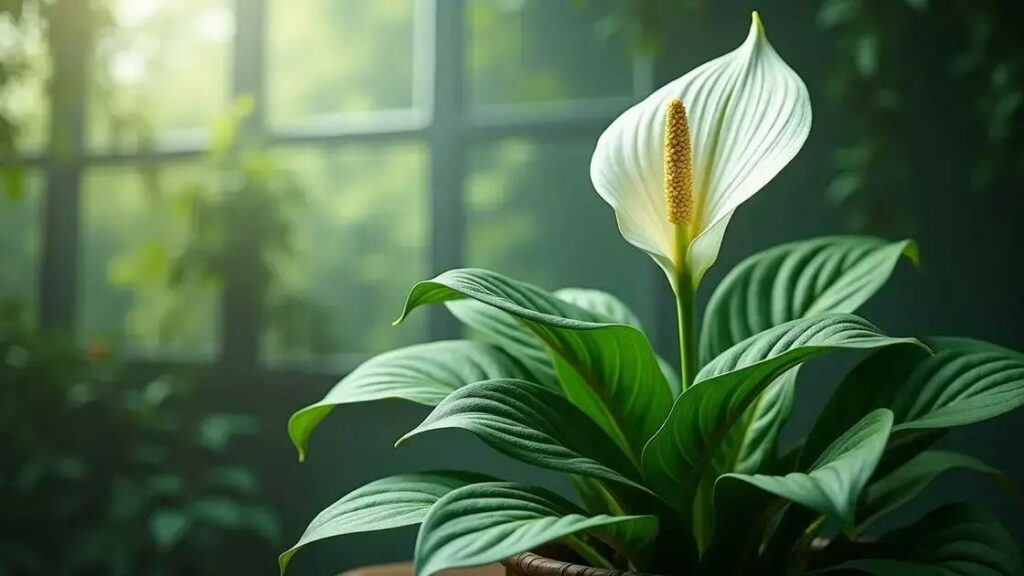How to take care of a peace lily plant effectively can transform your space with vibrant greenery. It’s a delicate process, but knowing key elements such as proper watering, soil types, and light exposure can make a world of difference. Let’s explore essential techniques to keep your peace lily thriving and radiant.
Table of Contents
ToggleKey watering practices for peace lily plants
How to take care of a peace lily plant involves understanding the importance of proper watering practices. Peace lilies thrive in environments that mimic their native tropical habitats, where humidity, warmth, and moderate water levels are ideal. Here are essential watering practices to keep your peace lily healthy:
Understanding peace lily watering needs
Peace lilies prefer their soil to be consistently moist but not waterlogged. Here are key factors to consider:
- Water when the top inch of soil feels dry to the touch.
- Avoid letting the plant sit in water, as this can lead to root rot.
- Give them a good soak when watering, allowing excess water to drain away.
Watering frequency and temperature considerations
Watering frequency can vary based on environmental conditions. Generally:
- In warmer months, you may need to water once a week.
- In cooler months, reduce watering to every 10-14 days.
Use room temperature water to prevent shocking the plant. Cold water can stress its roots.
Signs of improper watering
Keeping an eye on your peace lily’s leaves can indicate whether you’re watering correctly:
- Yellow leaves may signify overwatering.
- Brown, crispy leaf tips often indicate underwatering.
For more tips on nurturing indoor plants, consider exploring indoor gardening techniques.
Optimal soil requirements for thriving peace lilies

Optimal soil requirements for thriving peace lilies are essential to ensure healthy growth and vibrant blooms. The right soil mixture provides the ideal balance of moisture retention and drainage, which is crucial for the well-being of these beautiful plants.
Choosing the right potting mix
When selecting a potting mix for your peace lily, consider a blend that offers:
- Good aeration for root health.
- Retentive properties to hold moisture.
- Low nutrient content since peace lilies thrive in rich organic matter.
Recommended soil components
Creating your own soil mix can be beneficial. Here are some recommended components:
- Peat moss: Retains moisture and adds acidity.
- Perlite or vermiculite: Improves aeration and drainage.
- Orchid bark: Provides additional texture and promotes airflow.
A well-balanced mix could consist of 50% peat moss, 30% perlite, and 20% orchid bark.
Repotting and soil maintenance
Keep your peace lily thriving by repotting every 1-2 years. Look for signs indicating repotting is needed:
- Roots growing out of the drainage holes.
- Water not soaking in, indicating compacted soil.
For more tips on nurturing indoor plants, consider exploring indoor gardening techniques.
Sunlight exposure tips for robust peace lily growth
Sunlight exposure tips for robust peace lily growth are crucial for keeping your plant healthy. Peace lilies flourish best in bright, indirect light, making proper light placement essential for their thriving growth.
Understanding light requirements
Peace lilies prefer bright, filtered light but can adapt to lower light conditions as well. Here’s what to consider:
- Avoid direct sunlight, which can scorch the leaves.
- Too little light may cause yellowing of leaves and reduced blooming.
- Optimal light conditions help encourage vibrant foliage and flowering.
Best locations for your peace lily
Finding the right spot is crucial:
- Place your peace lily near a north or east-facing window for ideal lighting.
- Rooms with sheer curtains can diffuse the light effectively.
- Monitor your plant’s response, adjusting its location if needed.
Signs of light-related issues
Identifying the signs of insufficient or excessive light can guide you in maintaining optimal conditions:
- Brown leaf tips indicate too much direct sunlight.
- Leggy growth suggests insufficient light.
If your peace lily isn’t thriving, consider exploring indoor gardening techniques.
In conclusion
Caring for peace lilies effectively requires a combination of the right watering practices, optimal soil conditions, and proper sunlight exposure. By implementing the tips discussed in this article, you’ll ensure your peace lily thrives, showcasing its stunning foliage and elegant blooms. Remember to monitor your plant’s health regularly and adjust its care routine as needed. For additional insights and tips on enhancing your indoor garden, continue exploring methods to create a vibrant indoor oasis.

